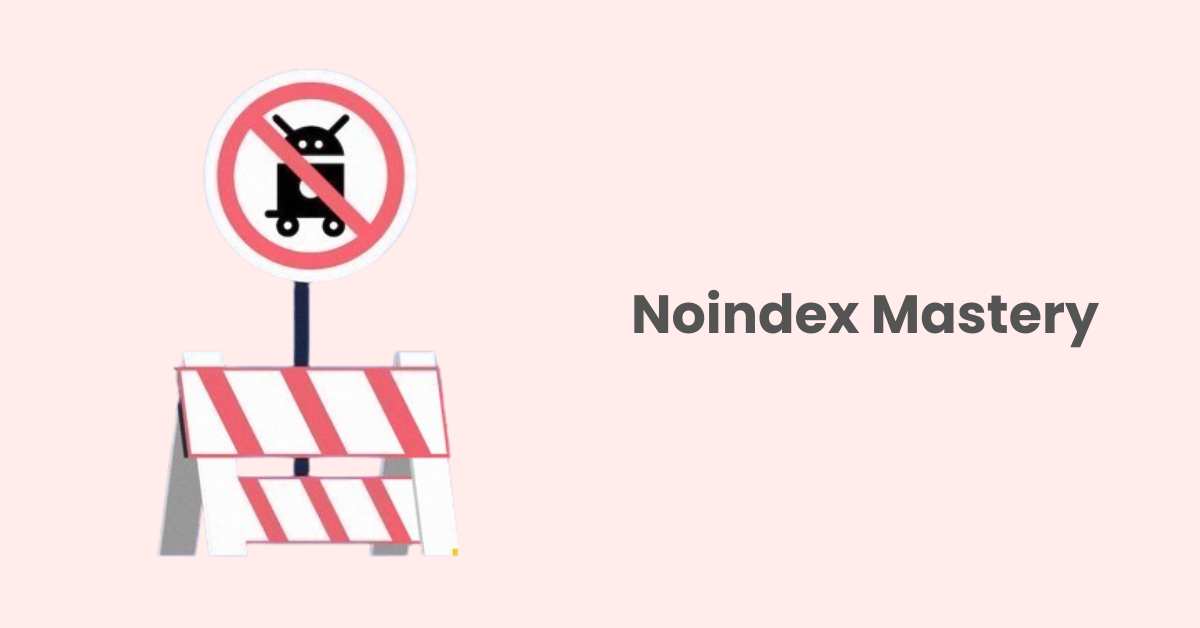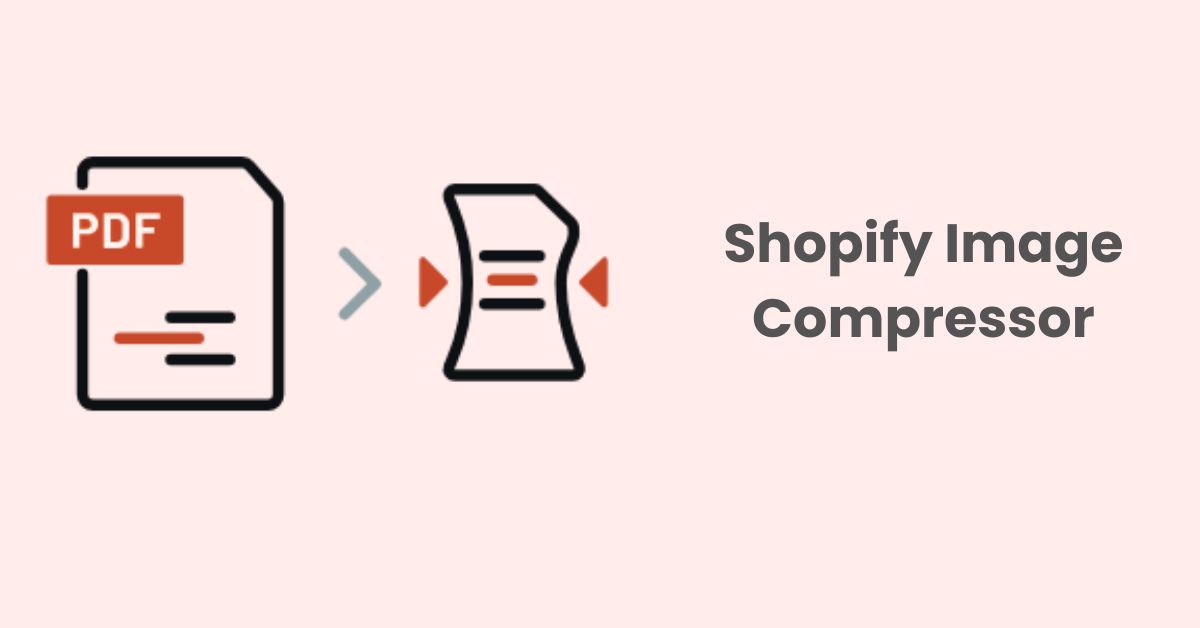Shopify Collections SEO: Best Practices For Your Store 2023
Whether you’re a newcomer to e-commerce or a seasoned online retailer, understanding and implementing effective Shopify Collections SEO techniques for your Shopify Collections can make a substantial difference in your store’s online presence and profitability.
In this comprehensive guide, we’ll explore Shopify Collections, delve into their significance, and provide a step-by-step breakdown of the best SEO practices in 2023.
What Are Shopify Collections?
Before we dive into optimizing Shopify Collections for SEO, it’s important to have a solid understanding of what Shopify Collections are and why they matter.
Shopify Collections are a means to group and categorize products within your Shopify store, enhancing the user’s shopping experience. They consist of the following elements:
- Collection: The top-level category where products are grouped.
- Subcollections: Subdivisions of the main collection.
- Products: The individual items within specific collections.
For instance, an online clothing store may have collections such as “Men’s Clothing,” “Women’s Clothing,” and “Accessories,” with subcollections like “Shirts” and “Pants” under “Men’s Clothing.”
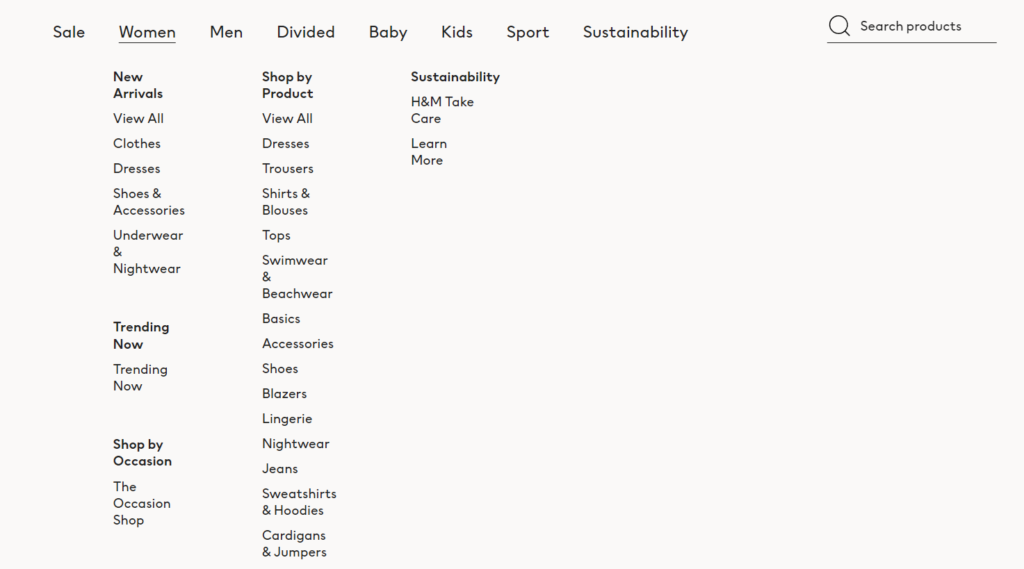
In summary, Shopify Collections are a valuable tool for organizing and presenting your products in a user-friendly manner. They help customers find what they’re looking for more easily and can contribute to a better shopping experience in your online store. Properly optimizing and utilizing collections can also have a positive impact on your store’s SEO and overall sales.
Now, let’s delve into the importance of Shopify Collections in SEO.
How Important Is Shopify Collections SEO?
Shopify Collections play a pivotal role in organizing and categorizing your products, making it easier for both search engines and customers to navigate your online store. By optimizing your Collections for SEO, you can significantly enhance your store’s chances of success. But Shopify Collections aren’t merely about organizing products; they are a fundamental component of your store’s SEO strategy. Here’s why they matter:
- Improving User Experience:
Optimizing Shopify Collections for SEO not only enhances your store’s visibility but also significantly improves the overall user experience. By ensuring that your collections are well-organized, properly titled, and keyword-optimized, you create a smoother navigation process for visitors.
Collections enable visitors to find products quickly, simplifying their shopping journey. This user-friendly approach leads to increased customer satisfaction, better engagement, and ultimately higher conversion rates on your online store.
- Search Engine Visibility:
Properly optimized collections can significantly improve your store’s visibility on search engines. When collections are well-structured with relevant keywords, you’re more likely to rank higher in search results.
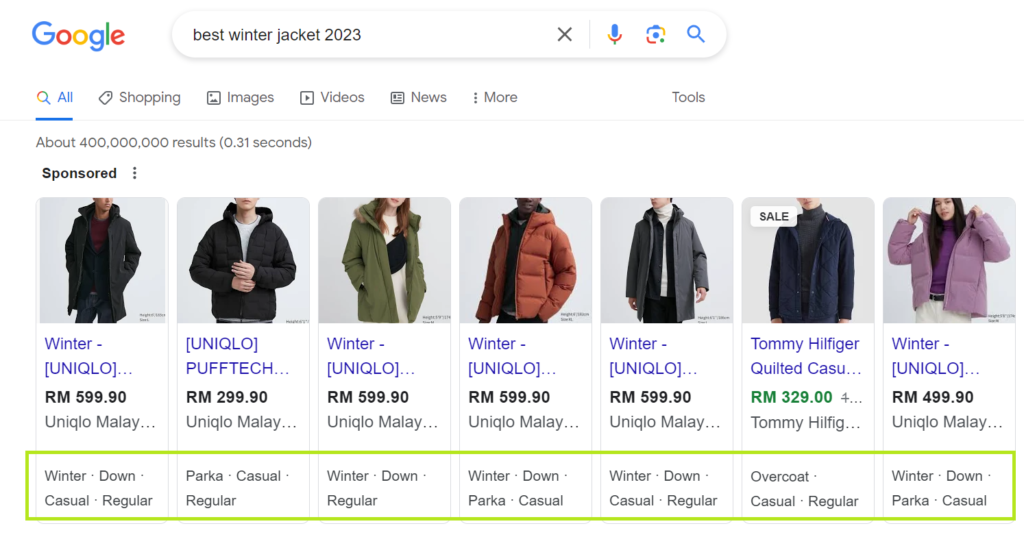
- Enhanced Targeting:
Implementing Shopify Collections SEO strategies can result in enhanced targeting of your audience. Collections allow you to target specific customer groups with personalized marketing campaigns.
By optimizing your collection titles, descriptions, and meta tags with relevant keywords, you increase the chances of your products appearing in search results when potential customers search for specific terms.
This precise targeting not only drives more qualified traffic to your store but also improves the likelihood of converting those visitors into customers, ultimately boosting your e-commerce success.
Now that we’ve established the importance of Shopify Collections, let’s explore the best practices for optimizing them in 2023.
What Are the Best Practices of Shopify Collections SEO in 2023?
In 2023, as e-commerce continues to evolve, it’s crucial to stay at the forefront of SEO practices for your Shopify Collections. To maximize the SEO potential of your Shopify Collections in 2023, you need a combination of effective strategies and tools like SearchPie, an app designed to bolster your Shopify store’s SEO. By implementing these up-to-date recommendations, you’ll be better equipped to navigate the competitive e-commerce landscape, attract your target audience, and boost conversions. Here are the best practices that you may want to take a look at and apply to your Shopify stores:
Optimize Collection Titles
Starting by optimizing the titles of your collections. The Collection Title is an important part of your collection page’s SEO setup as it is the first thing users encounter when they land on the page. Shopify automatically uses the title you enter to create the page’s H1 heading, which, in turn, is utilized by search engines to determine the page’s content and purpose.
Just Navigate to Collections and you can easily optimize the Collection titles.
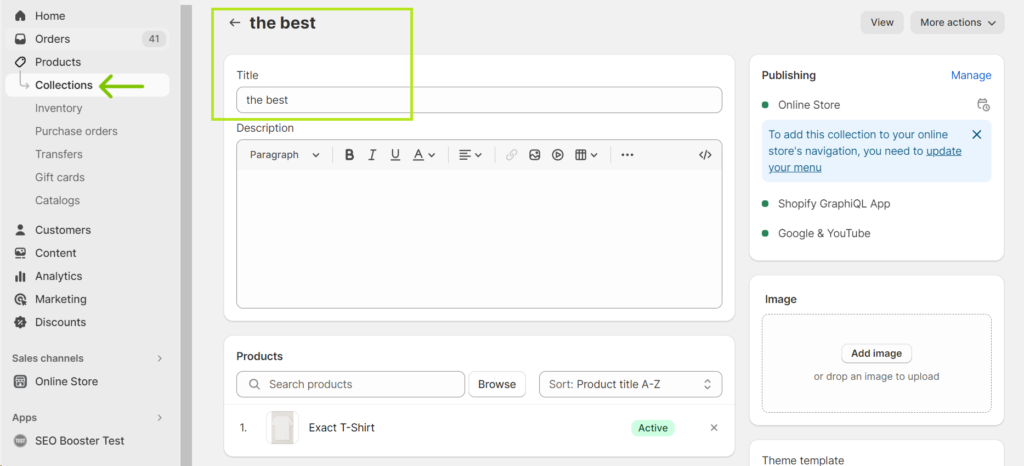
Certainly, here are concise tips for setting collection titles in Shopify:
- Clarity: Make titles clear and descriptive.
- Keywords: Include relevant keywords.
- Conciseness: Keep titles concise.
- Proper Capitalization: Follow capitalization rules.
- Avoid Keyword Stuffing: Don’t overuse keywords.
- Monitor and Adjust: Regularly review and update titles.
- Localization: Consider regional variations.
- User-Centric: Focus on what customers are searching for.
- Brand Inclusion: Add branding if it enhances recognition.
- Test Variations: A/B test titles for effectiveness.
For example, instead of a generic title like “Summer Collection,” opt for “2023 Summer Fashion Trends Collection, it’s definitely better.
Use Descriptive Collection Descriptions
Write informative collection descriptions that give visitors an overview of what to expect. Use natural language and relevant keywords to make it easier for both users and search engines to comprehend the content.
Here are some tips for a collection description:
- A description with around 100 words is the best.
- Give a good summary of the product in the category without revealing too much detail.
- Include a ‘Read more’ link that leads to a separate web page or blog piece if you want to expand on your descriptions.
- Input the keywords customers would use to find your products and include them in your collection description to get better SEO results.
Create SEO-Friendly URLs
A good collection URL in Shopify should be concise, reflect the collection’s content, and ideally include relevant keywords for SEO. It should be user-friendly, easy to remember, and free of unnecessary symbols or numbers.
For example, change “/collections/s123” to “/collections/summer-women-dress-2023.”
In this example, the original URL contains a generic identifier “s123,” which is not informative for users or search engines. The SEO-friendly URL, on the other hand, provides clear information about the content of the collection, indicating that it contains women’s dresses for the 2023 summertime.
This not only helps search engines understand the page’s content but also makes it user-friendly and more likely to attract relevant organic traffic.
Optimize Image Alt Text
It is advisable to upload a clear, relevant, and optimized image for your Shopify collection pages. Ensure that alt text for images within collections is descriptive and contains relevant keywords. This is not only good for SEO but also crucial for accessibility.
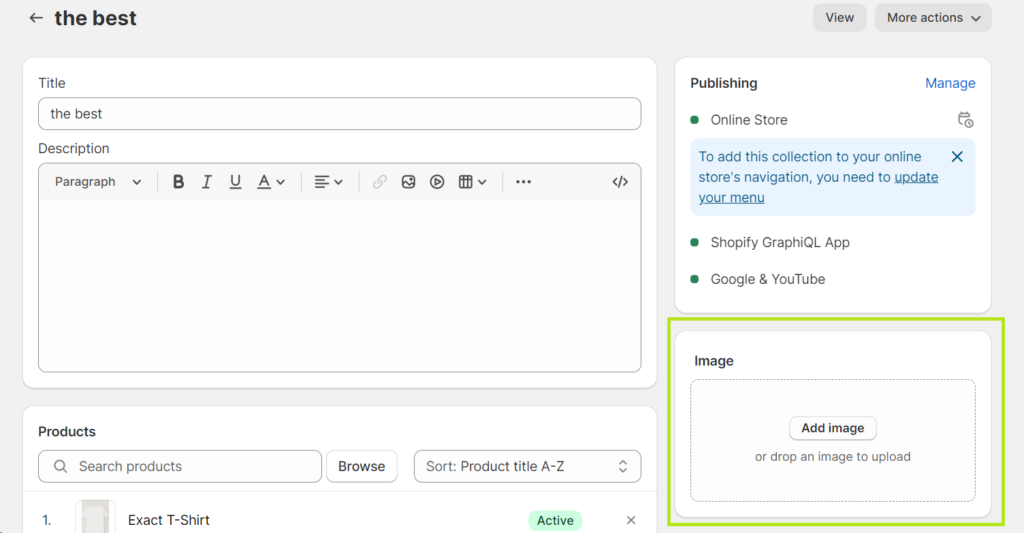
Utilize Meta Titles and Meta Descriptions
Craft unique meta titles and meta descriptions for each collection. These snippets appear in search results, so they should be engaging and keyword-rich. Consider using the SearchPie app for efficient management and optimization of your meta information.
Meta Title contains the keyword you wish to rank for and should be kept between 10 – 70 characters while Meta Description should have around 160-200 characters to fully be shown on SERPs.

Search Pie provides an auto system for you to update meta tags quickly via the Bulk Meta Tags feature. There are two options for you: with the Let the App Decide option, your title will be adjusted to conform to the standard format: page_title | shop_name – page_description shop_name or you can create your own.
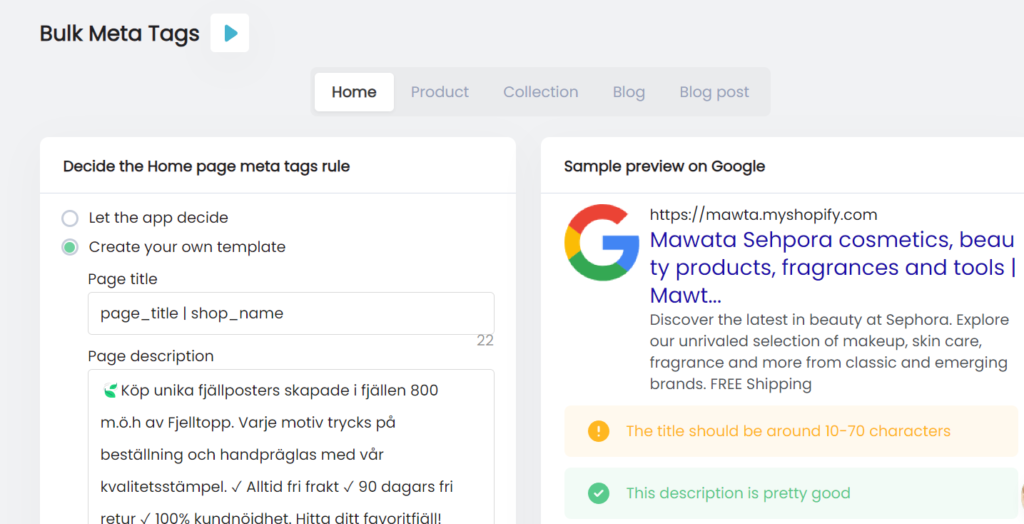
Leverage Header Tags
Use header tags (H1, H2, H3, etc.) to structure the content within your collection pages. The main collection title should be wrapped in an H1 tag, while subcollection titles can use H2 or H3 tags. This helps search engines understand the hierarchy of your content.
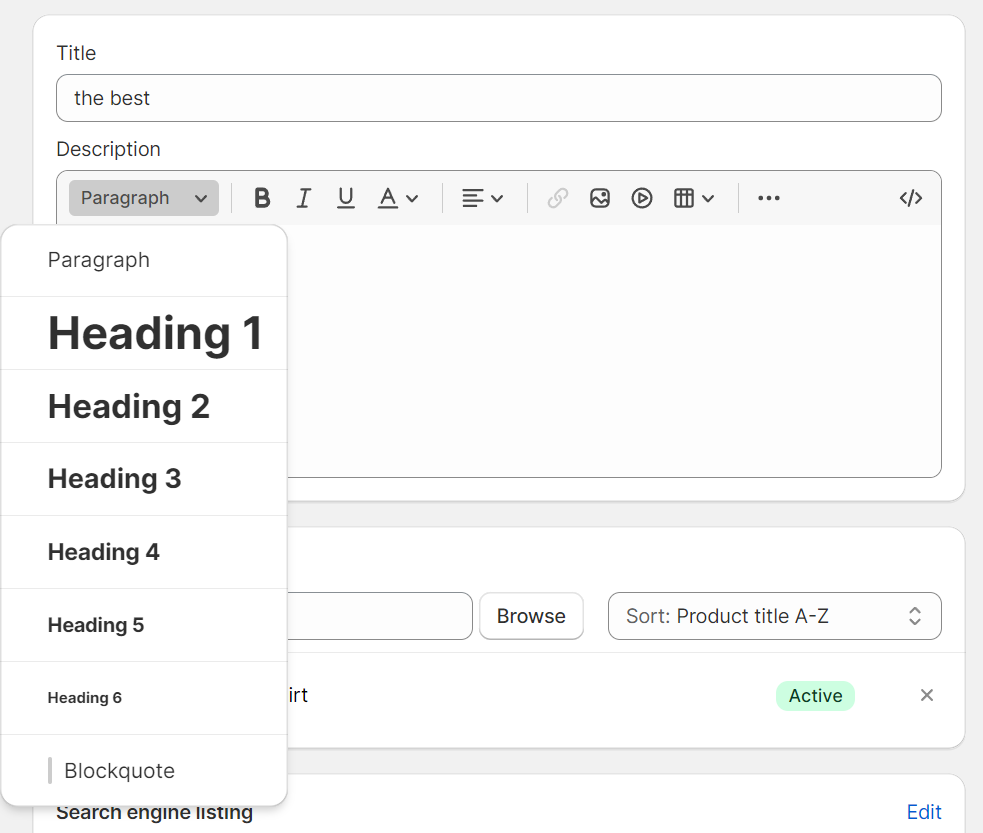
Internal Linking
Establish links between related collections and products. This not only aids in navigation but also distributes SEO value across your site, benefiting both users and search engines.
Mobile Optimization
Ensure that your collections are mobile-friendly. Given the prevalence of mobile browsing, a responsive design is essential.
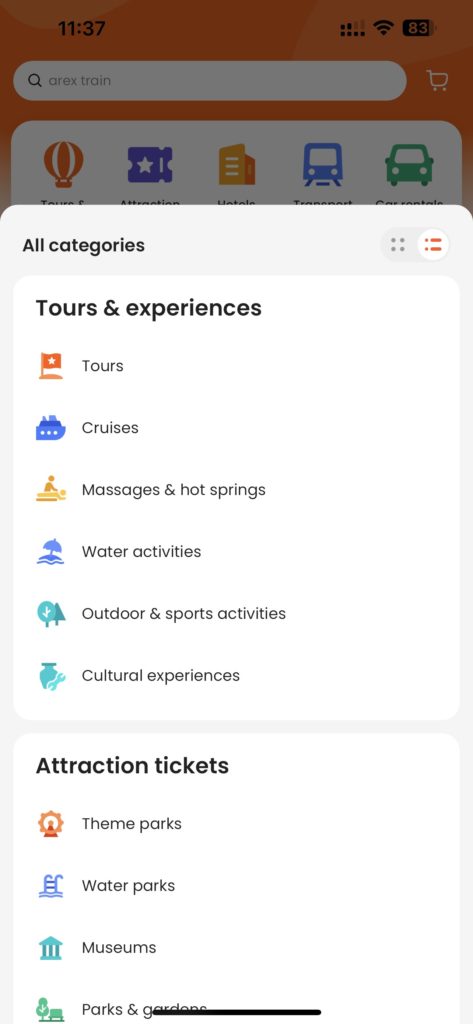
Regular Monitoring and Updates
Recognize that SEO is an ongoing process. Continuously monitor your collections’ performance, track keyword rankings, and update them as necessary. The SearchPie app streamlines this process and provides recommendations for improvements.
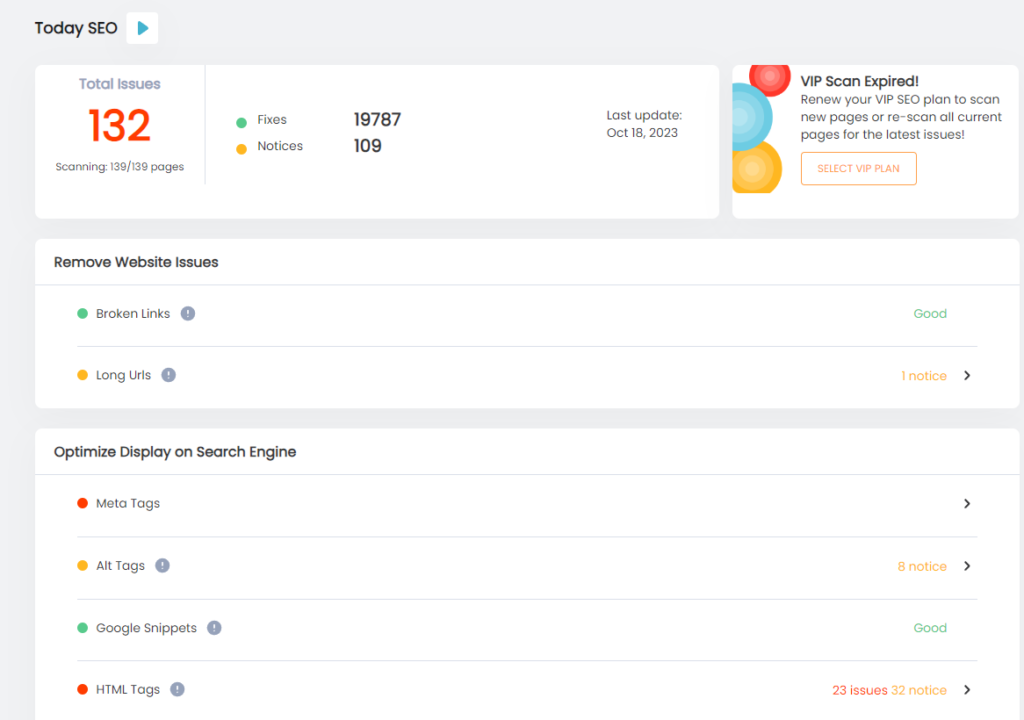
Optimize for Site Speed
Site speed is critical for SEO. Compress images, employ browser caching, and utilize a content delivery network (CDN) to enhance your site’s loading times.
Shopify operates as a hosted service, significantly relies on caching, and runs on a massive infrastructure that includes a robust Content Delivery Network (CDN). This benefits online merchants by minimizing storefront response times.
Nevertheless, overloading your theme, using oversized images, and installing an excessive number of Shopify apps can negatively impact your website’s loading speed.
Social Sharing and Integration:
Facilitate easy sharing of your collections on social media platforms. Social signals can indirectly impact your SEO help generate organic traffic, and increase online visibility.
When customers share your products or collections on social media platforms, it exposes your brand to a wider audience. Social signals, such as likes, shares, and comments, can also indirectly influence your search engine rankings, contributing to improved SEO performance.
This integration fosters engagement, drives traffic, and enhances your e-commerce store’s overall online presence.

Encourage User-Generated Content
Encourage customers to leave reviews and ratings for products within your collections. User-generated content can boost your SEO efforts.
By implementing these best practices and utilizing the SearchPie app, you will be well-prepared to optimize your Shopify Collections for SEO in 2023.
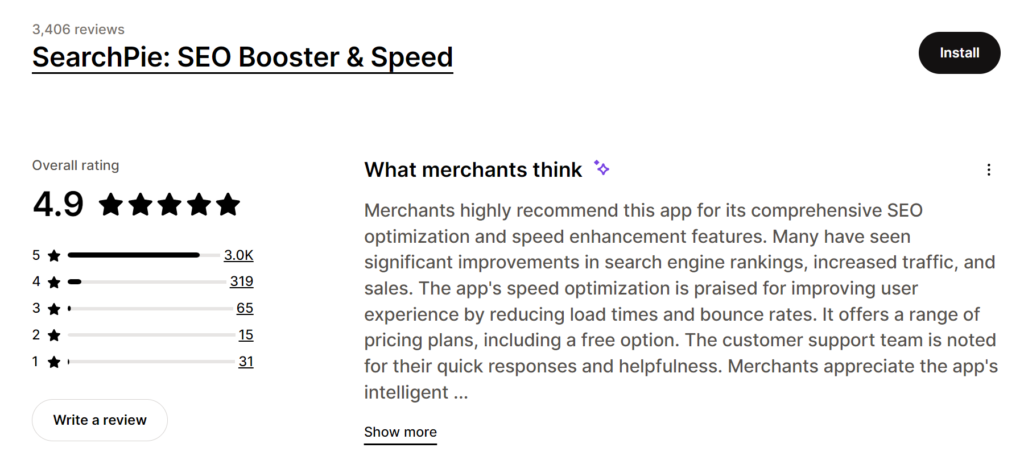
Shopify Collections SEO: Conclusion
Shopify Collections, often underestimated in SEO, are key to providing an exceptional user experience and boosting your search engine visibility.
By implementing the best practices outlined in this guide and staying abreast of the latest trends and tools, such as the SearchPie app, you can leverage the power of Shopify Collections SEO for your store’s success in 2023.


